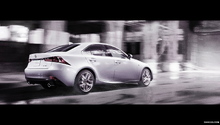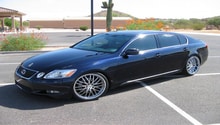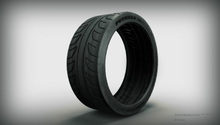Lexus: How to Choose Aftermarket Wheels
Choosing aftermarket wheels for the Lexus is a confusing process because of all the options you're faced with. Here is a detailed guide to buying aftermarket wheels.
This article applies to the Lexus IS, ES, GS, and RX (2005-2013).
Choosing a set of non-factory rims for your Lexus can be a daunting task; there's a lot of things you need to know before you go looking, and it can quickly become confusing. Take a few minutes to learn what to look for and what you need to know.

Materials Needed
- Small plumb bob/string
- Carpenter's framing square
- Straightedge (yardstick, small aluminum level - anything that will help transfer measurements)
- Large pieces of cardboard (to transfer marks from the body and suspension)
Step 1 - What do you want and why?
Why do you want a new set of rims? Are the ones on the car looking pretty shabby? Do you plan on running the car on a road course or for prolonged high-speed driving? Do you want something trendy and flashy for the car show circuit? A wheel that's good on the street may not be the best one for a gymkhana, and likewise a rim/tire combination that has an aggressive stance may not hold up well in everyday commuting. Determine what you want, then do your research to see what your options are.

Step 2 - Start with what you have
In order to fit new rims and tires on your car, you need to first know some critical dimensions: Hub diameter (what the wheel center will fit over), bolt circle diameter, distance available from the mounting face of the brake hub (what the wheel fits against), to obstructions like fender lips, suspension components, etc. Figure 2 helps illustrate the key dimensions you need to get.
To establish a base line, get the sizes related to the factory rims currently on your car. The typical bolt circle for a Lexus is 4.5-inches (114. mm) in diameter from the center of the wheel hub to the center of the wheel studs; hub diameter is 2.36-inches (60.1 mm) - this is shown as 5x114.3 in most catalogs. The Lexus uses five 12x1.5 mm wheel studs. Wheel diameter and width are usually expressed in inches; the 2000-2005 IS 300 and SportCross use a 17 x 7.5 wheel, which means the rim is 17-inches (431.8 mm) in diameter at the tire bead, and 7.5-inches (190.5 mm) wide between the mounting flanges. It has what is regarded as a high positive offset of between 1 3/8-1 3/4-inches (35-45 mm) from the center line of the rim to the mounting face of the wheel.
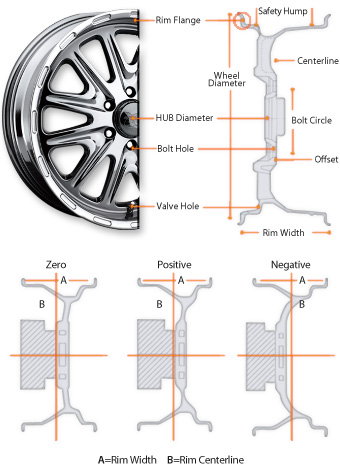
Step 3 - Find out what your current tire size is
You'll also want to get familiar with tire sizing. A label inside your door jamb should have information on what was factory equipment for your car. Measure the overall diameter, width and circumference of the tire, and take note of the size, speed rating, etc. This will help you determine what already clears. If you want something wider or in a lower profile, these dimensions will give you a baseline to start from.

Pro Tip
Your local tire and wheel seller can assist you in determining what size your original rims are. Most dealers have catalogs or electronic databases with key dimensions for wheels and tires that they can cross-reference and match to your car.
Step 4 - How "fit" are you?
If you want an oversize rim/tire combination, you need to know how much space you have to work with in the wheel well and what can be in the way. The critical dimensions you need to find on your car are taken off of the mounting face of the hub (where the wheel meets the disc brake rotor "hat"). From there, use a framing square and a plumb bob to get distances outboard to the inner fender lip, and inboard to suspension components between the hub and frame. Place the car on jack stands, remove the front and rear wheels on one side, place a large piece of cardboard under the wheel well and use a framing square along with a plumb bob to establish critical points like the wheel mounting face at the hub, edges of fender lips, fender liners and suspension components. Hold the string for the plumb bob on the face of the part to be measured; drop the bob so that it hovers just above the cardboard, and mark its position with a pencil. You can then pull out the cardboard and measure without parts getting in the way.Also, measure the inside diameter of the rims you took off to get a baseline dimension to clear the brake calipers, hoses, etc.
(Related Article: How to Jack Up Your Lexus - ClubLexus.com
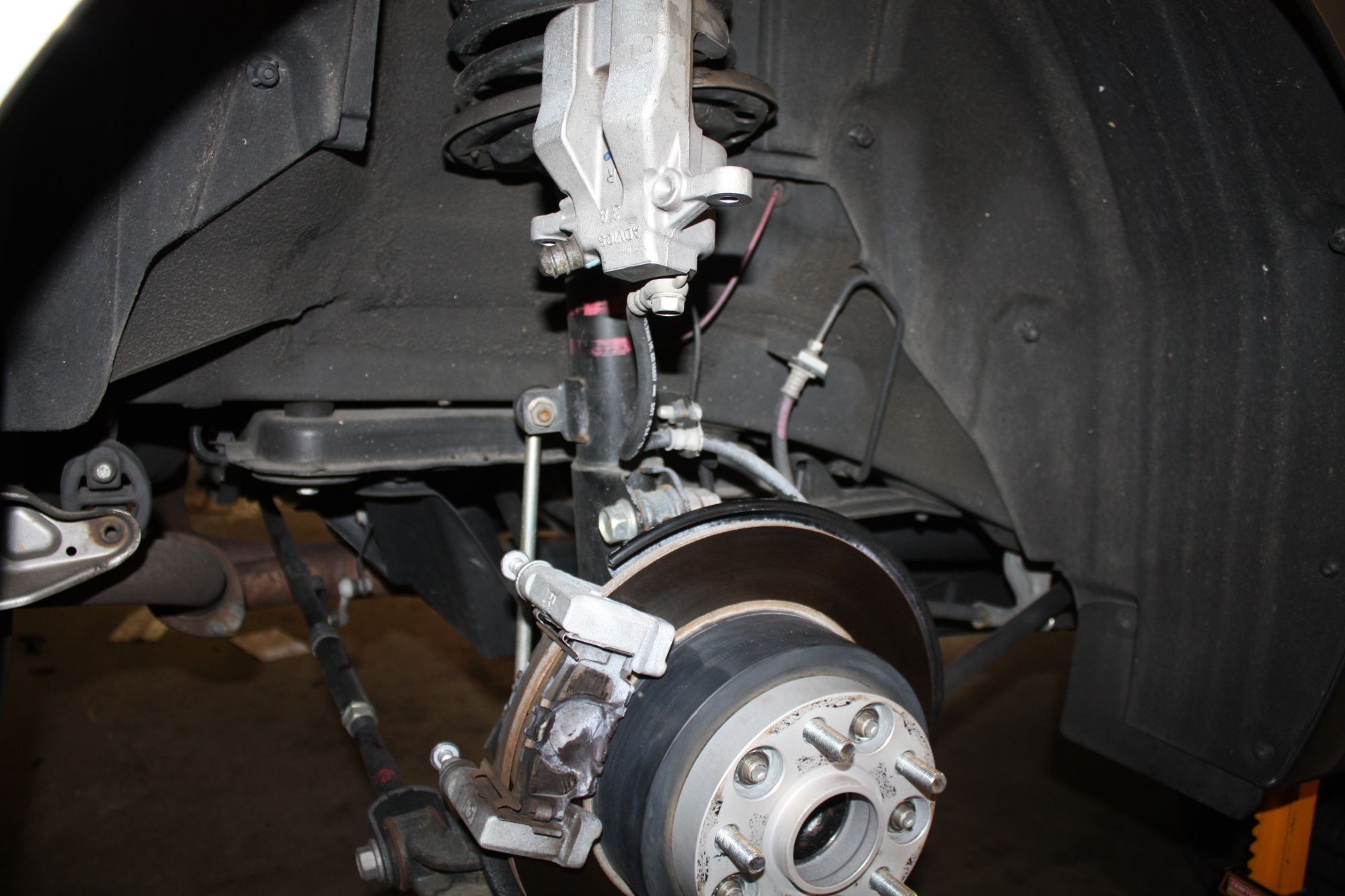
Step 5 - Research what you want for a wheel/tire combination
With all your critical dimensions in hand, start looking at websites or visiting local dealers to find a rim that you think would look good. Some websites may have a selector that lets you upload a photo of your car and superimpose the wheels on it., or you can play with a photo editing program to get a good visual of it. If you haven't been doing so already, keep an eye open for similar cars in magazines, on the road, and on the internet, taking note of what they have and what you like.
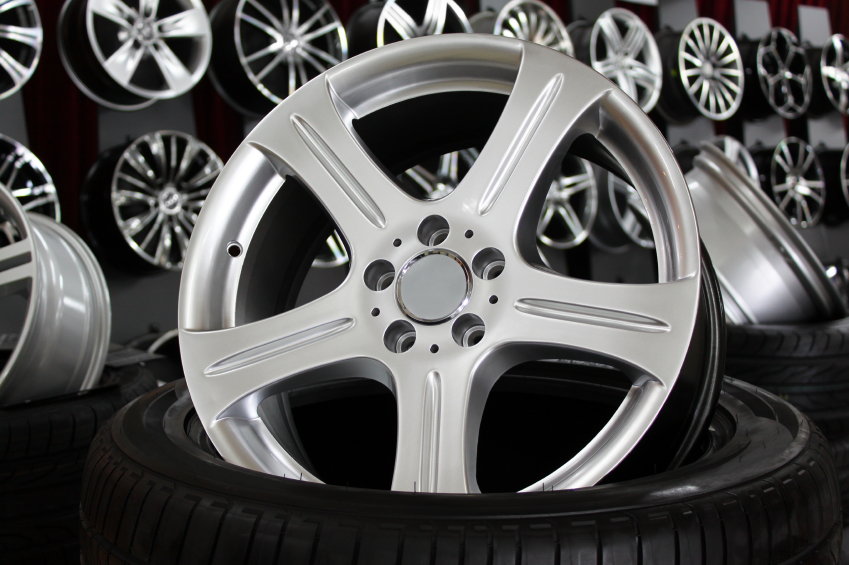
Step 6 - Pick the right combination of wheel and tire
Not only are looks important, but also overall diameter. The closer you match the original overall diameter of tire that your car came with, the less concern you'll need to have about the speedometer reading too fast or too slow. And it goes deeper than that: the typical tire will rotate 600 times in a mile. Now imagine all the moving parts in the drivetrain spinning faster or slower than normal, as well as sensors picking up on that movement. If you pick an under or over-size wheel/tire combo, you may be potentially setting up a high-wear condition that will result in expensive repairs further down the road. Try to stay within factory specs if you can.

Pro Tip
You can "plus-size" your combination by going with a larger-diameter rim and a smaller sidewall profile. The trick is to get the combination that matches your original wheel/tire's overall diameter.
Step 7 - Accessorize and protect your investment
When you get a new set of rims you'll also have to get a set of lug nuts to go with them. There are lots of choices, and some of them will be dictated by the type of rim and depth of mounting studs. And since you're putting a bunch of money into them, consider getting a set of lug nuts that require a special socket or keyed insert to remove them to help thwart would-be thieves from stripping them off your car.

Step 8 - Pull the trigger
Once you've committed to a wheel and tire that you like and will fit your budget, place your order. If you're planning on buying them online and having someone else put them on, visit with shops first to find out which ones will accommodate you as some won't install wheels and tires not purchased through them. You'll also need to figure out what you want to do about road hazard and other product warranties, and don't forget to get the proper care and maintenance items for your new wheels' finish.
Pro Tip
Don't forget to factor in the costs of shipping in on-line pricing, especially if they are shipped by motor freight due to size and weight versus UPS, FedEx, etc.
Related Discussions
- Will Those Wheels Fit? Start Here - ClubLexus.com
- 2nd Generation LS Wheel Thread Index - ClubLexus.com

